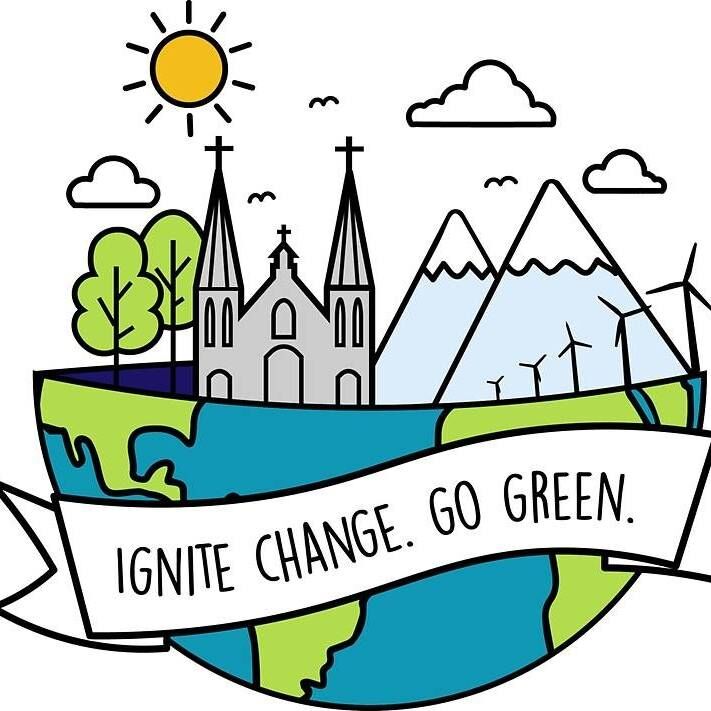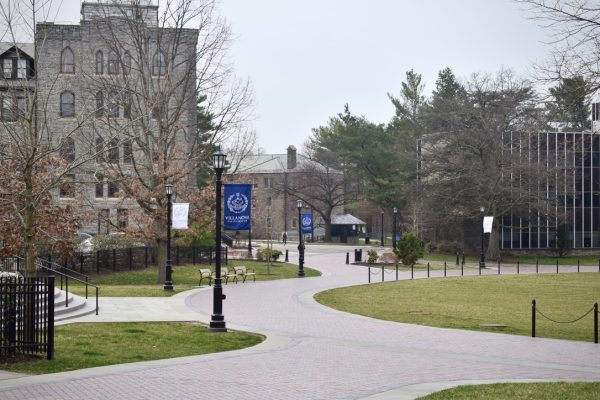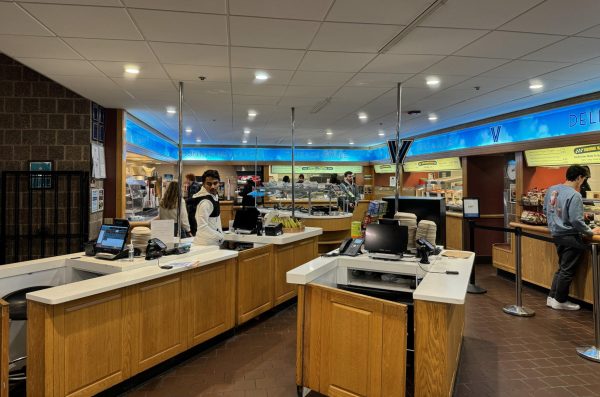Villanova’s New Sustainability Plan: In Theory and Action
Courtesy of Villanova University
The “Food News” group aims to mitigate food waste on campus.
November 11, 2020
The University has introduced a new plan to make the school more sustainable over the next decade, not only environmentally, but also socially, economically and academically. The plan was developed by the VSLC, the Villanova Sustainability Leadership Council, a group established in 2018 as the University’s governing body for sustainability.
The VSLC is made up of five committees, each responsible for a different aspect of sustainable development: Operations, Social Justice, Health & Wellbeing, Student Life, Academics and Research. They are working together to improve the baseline sustainability score of Villanova, which is 33%.
In the new sustainability plan, Villanova followed the 2017 UN’s Sustainable Development Goals as a roadmap for their own plan.
The foundation of the plan was sent out to the student population and includes several goals to meet by 2030. These include an interdisciplinary academic institute to explore sustainability options, a plan to introduce more biodiversity and a student meal donation program.
This looks like a promising turning point for Villanova, and this work by the administration is only supported and surpassed by the work of our own classmates.
This semester, a petition started by freshman Patrick Carney, achieved its goal of eliminating the use of styrofoam containers in the dining halls and replacing them with biodegradable alternatives in the spring semester. This work was achieved through 1,157 signatures by the end of October. Some of the sentiments expressed by students who signed the petition included, “We need to be a more waste-conscious campus,” and “I believe that sustainability is important, even more so on a college campus.”
In my opinion, the most concrete aspect of the plan was the promise to supply “50 percent of campus with regional hydroelectric power, supporting the goal to supply 100 percent of University electricity from renewable sources by 2030.”
I say concrete because while I and many others are extremely excited for the steps the University is taking to ensure our campus moves towards environmental progress, many of the steps outlined are somewhat opaque in the exact timelines and points in which the admirable goals will be achieved.
“Rather than a fault of the plan, I believe this is an upside,” Carney said. “I personally believe the university is attempting to hold itself to the highest standard possible. In order to do so, many of the statements are on the broader side of the spectrum— they’re less specific. For example, under the title Waste on page six, the University says that ‘There will be zero single-use plastic sales on campus and all pre- and post-consumer food waste will be eliminated from landfill or incineration.’ If the university holds itself to this standard and many of the other standards it has set for itself, then I believe we are on the right track.”
He makes a good point, as this plan should be seen not just as a to-do list for the administration, but an agreement made with the school population and a promise that we should be ready to hold the administration to in the coming decade.
“I am very happy with the start which Villanova has laid on the table,” Carney said. “However, I believe this plan has to be carried out and can not be withdrawn or altered in a manner that sets us back. As the student body, we are not only entitled to hold Villanova accountable to this plan, but we must hold them to this plan. I am a strong believer in subsidiarity, and believe if we truly want change in the direction of environmental sustainability in our world, we have to start here in our own community. Thinking on this topic, I am reminded of a poster in the staircases of Mendel. It says ‘recycling takes only one person: you.’ To take this a step further, I say environmental sustainability begins with one person: you. That ‘you’ is each and every person in our community here at Villanova. We do not have much time to begin to change our ways. Villanova has set a firm plan in place to start changing our ways now rather than later. We have to do our part by living in socially, economically and environmentally sustainable ways. Holding ourselves and Villanova as a whole accountable to this plan is one way to ignite this change in our world.”
It is perspectives, such as this one, coming from the student community, that then go forward to set plans, both big and small, and push those plans through to real results. It is the drive students have to improve our school for the better that will actually make positive change in the way of sustainability on our campus and beyond. I encourage you to take a look at our new sustainability plan and form your own opinion. Start to enact change needed that you know can help to improve all aspects of sustainability at Villanova.








